Some may lament the loss of the ‘traditional’ large car, yet they still do exist. However, they look a bit different in 2023 and they can do their thing without using any gas. While the Falcodores have long gone, those after a big car still have choices, with the option to go electric as well.
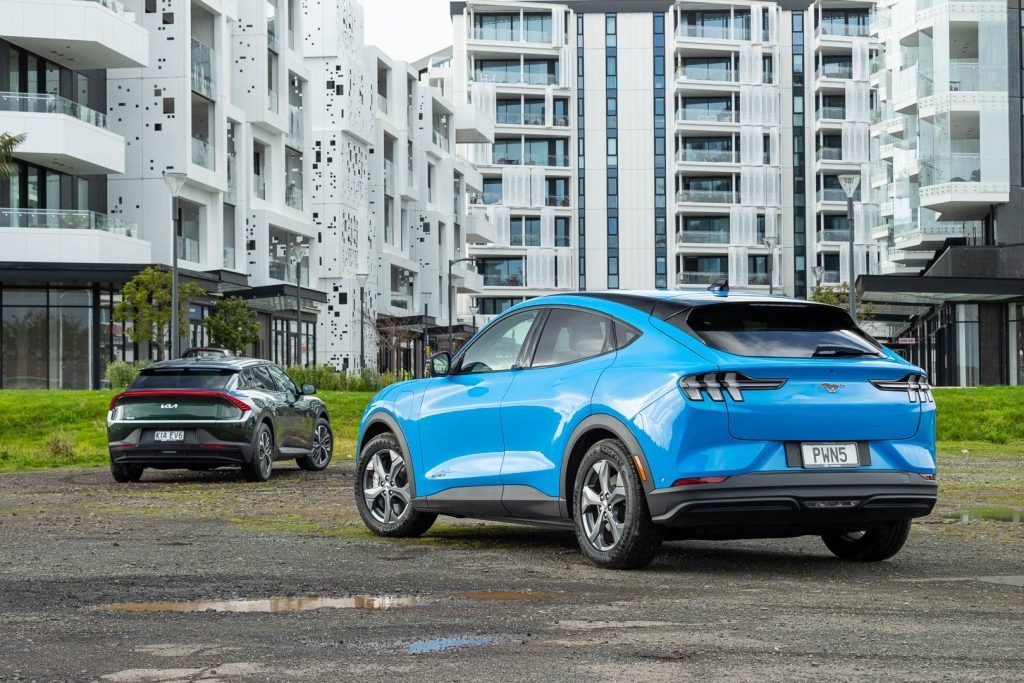
Machines like Kia’s EV6 and Ford’s Mustang Mach-E are marketed as SUVs but the term has a very broad interpretation. Yes, these do ride a little higher but are low slung in profile, drive from the rear and are optimised for tarseal.
Each is a large five seater, with a decent boot and they cost much the same. With similar hardware, performance and efficiency, they are direct rivals. So which is the one for you?
Ford’s Mach-E leverages the famous pony badge to engender fervour for its latest electric offering and here the entry-level RWD model squeaks in under the rebate cap, with an on-road price of $79,990. With a 76kWh battery (70kWh usable) it has a quoted range of 440km WLTP.
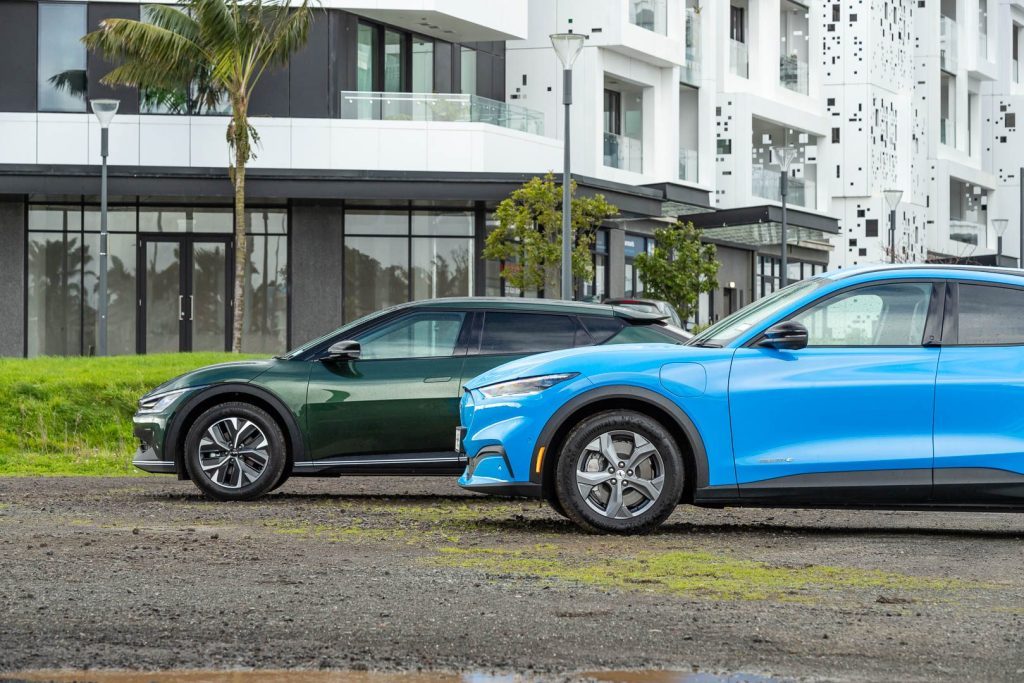
It has a rear-mounted 198kW/430Nm motor, numbers that aren’t too dissimilar to those of the old XR6, though are made and delivered in a totally different manner.
The Kia EV6 range has two variants under the $80k mark, and we have the most popular selling model, the long-range Air costing $79,990. We guess Kia throws the on-roads in so you can net the rebate. This has a 77kWh battery (74kWh usable) and a big 528km WLTP range, while the rear-mounted motor outputs 168kW and 350Nm.
Ford doesn’t list charge times or efficiency on its website, though 17.2kWh/100km is quoted elsewhere, while the equivalent number for the Kia is 16.6. On test, they averaged a bit higher, the Mach-E on 19, the Kia on 18.
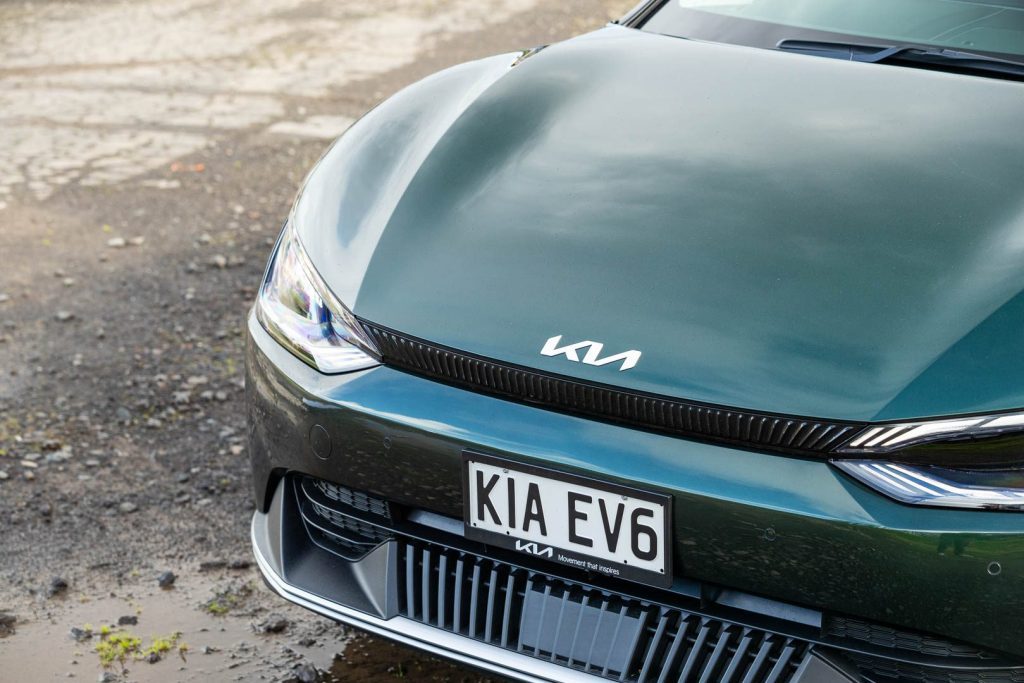
Both will take on around 15kWh of energy from a 12hr charge on a three-pin charger (though that’s something you’ll need to buy for the Mach-E which only comes with a cable for public AC charging whereas Kia provides both), adding about 90km of range.
If it’s of interest, the Mach-E added 33kWh in 48 mins at a 50kW DC charger (34 to 80 per cent and adding 150km) costing $26.91. We charged the Kia at home, because who really has the time to just sit around waiting?
For those who do bigger distances more regularly, go for the Kia. Its 800V architecture allows for much faster DC charge rates of up to 233kW, whereas the Mach-E is maxed out at 115kW. On a 300kW hyper charger, it means the Kia can be charged from 10 – 80 per cent in 16 minutes, while the Ford will take 40.
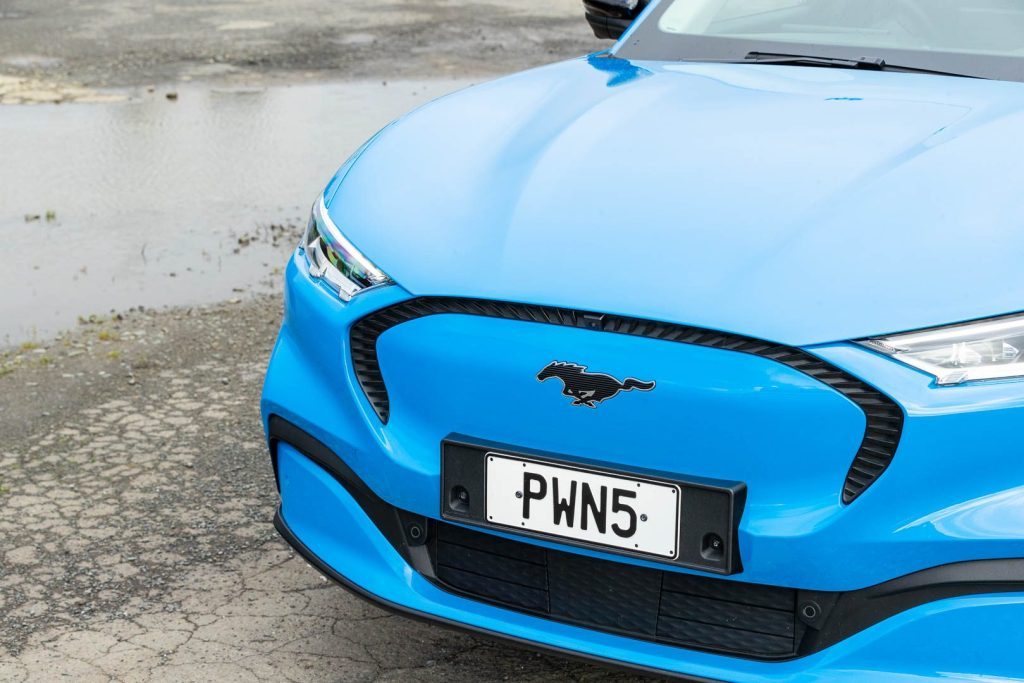
As entry-level models they don’t have all the extras, more like the essentials but these days that’s plenty; smart keys, charge pads, loaded infotainment systems etc. The Kia has a powered driver’s seat with memory, good if you share the car.
Neither has leather trim, though the Mustang gets a seat and wheel warmer so you can survive without firing up the heater and sucking energy. When travelling one up, it’s more efficient to warm the driver rather than the whole cabin, although a pair of woolly socks is a must until they invent heated pedals.
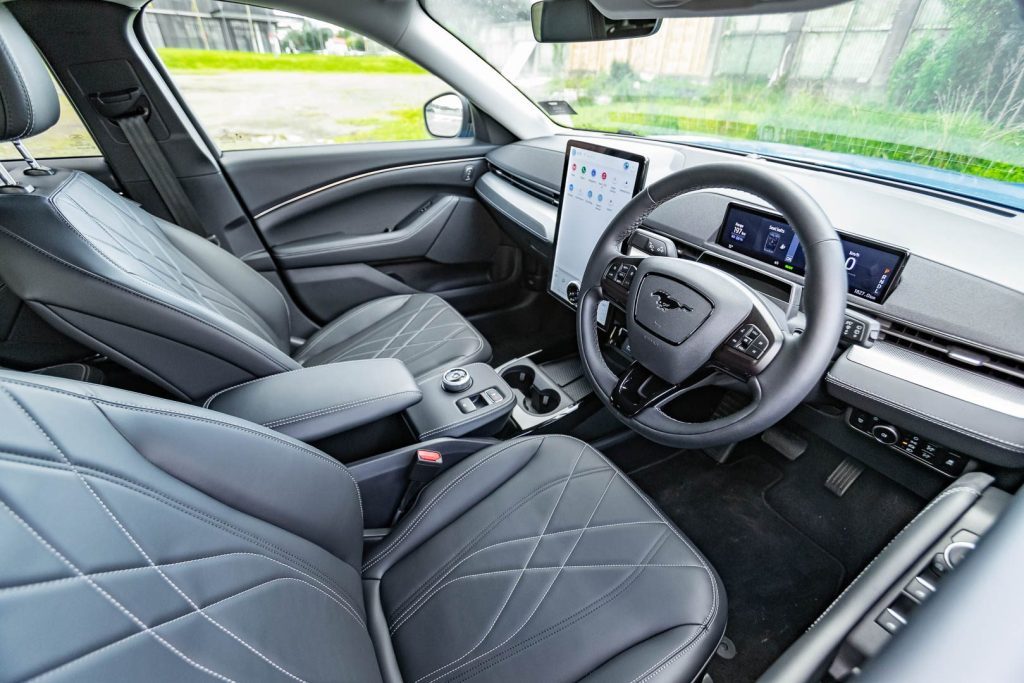
The Kia’s centre console places the charge pad and drinks holder in closer proximity, though both offer generous cabin storage. The Mustang’s interior comes with plenty of padded surfaces, the double stitching a nice touch, yet the level of finishing is higher in the Kia with a better air of quality.
But for some, that big screen in the Mustang will be enough. The Kia’s display has a wide format but with less overall space the touch points are smaller while it’s also more of a stretch from the driver’s seat.
Thanks to its size, there are more buttons on the Mach-E’s screen, so generally there’s less swiping involved, and the sat nav map is huge, handy when you’re wondering where you are.
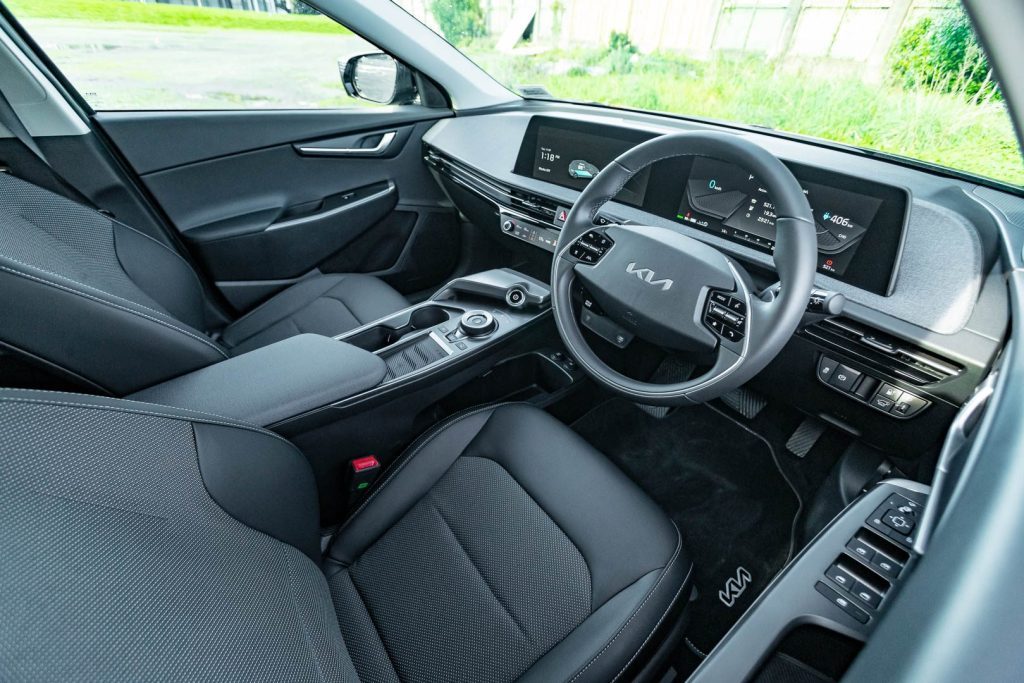
They both have top safety creds, each with five-star rating thanks to the usual list of crash mitigators and driver aids. Most are well calibrated, usually only helping when required, though the Kia’s lane keeping system is more intrusive than the Mach-E’s. The active cruise in each will take care of motorway duties, the Mustang’s better at lane centring, and each works well in traffic.
Trick door handles are an EV must. Push a button on the Mustang and they pop out while the flip-out handles of the Kia are not quite as wowing. But both are functional openers, unlike some these days. They have a (slightly) raised seat height, though it’s easier to get into the Kia, the Mustang with a sill to step over.
And they each have a spacious driving position, the Kia with greater adjustment, the Mustang’s a bit cushier but both will accept a frame nourished with decades of steak, eggs and chips. The A pillars are rather chunky in the Mustang, the Kia then having better outward vision.
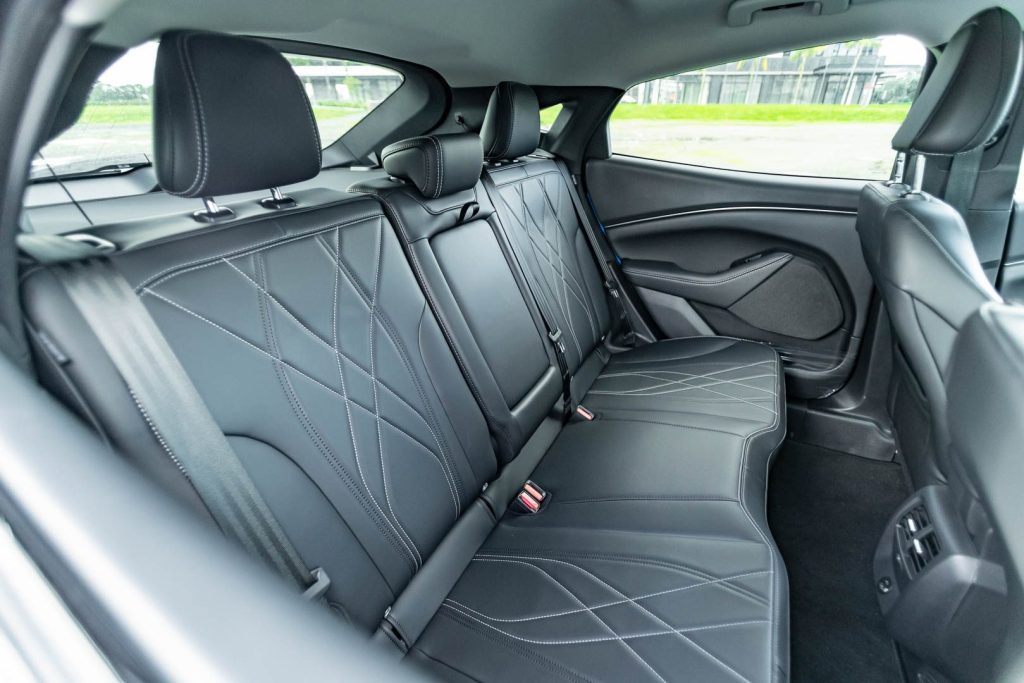
The Mustang counters with a superior parking camera with its 360 degree nature and a larger screen, the Kia with just a back-up monitor. We like that there is a quick access camera button in the EV6, whereas it’s a couple of taps away in the Mustang.
Both have rotary-type drive selectors, the Kia’s much easier to use as you can too easily nab P in the Mustang rather than the intended R.
While the EV6 feels bigger inside, they are about even for cabin width. There’s more rear seat leg room in the Korean however, and access is easier via larger doors. You can also recline the seat right back for a snooze when long range roaming. Both have a flat floor to better accommodate the occasional third back seat passenger.
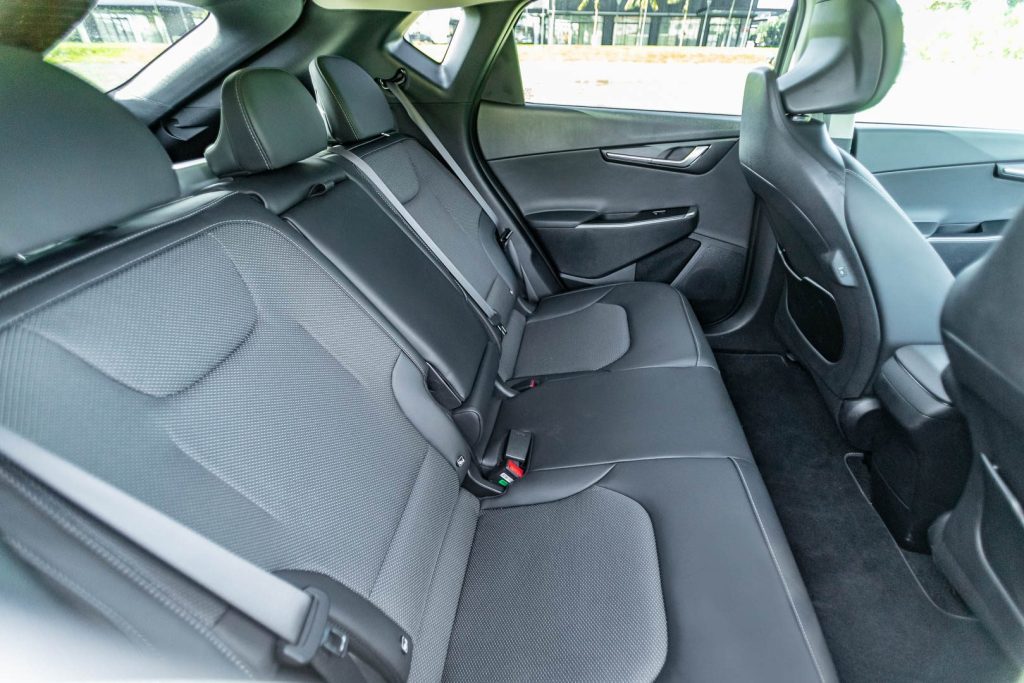
They have similarly sized boots in terms of length and width, the Ford’s with a larger overall capacity by virtue of its more upright tailgate. The Kia has a longer overall load length when the rear seats are folded, which can be achieved via remote latches, and it has a powered tailgate.
You can fit a tow bar to the long Range EV6, rated at 1600kg braked but no tow option is available for the NZ Mach-E.
Though each motor develops a heap of torque from the get go, the throttle mapping is refined and progressive for a smooth take off. Both have the usual abundance of pull, and quick response when up and rolling. The Kia has a particularly creamy delivery, whereas the Mustang gives the odd jolt when accelerating or clunk when changing from D to R.
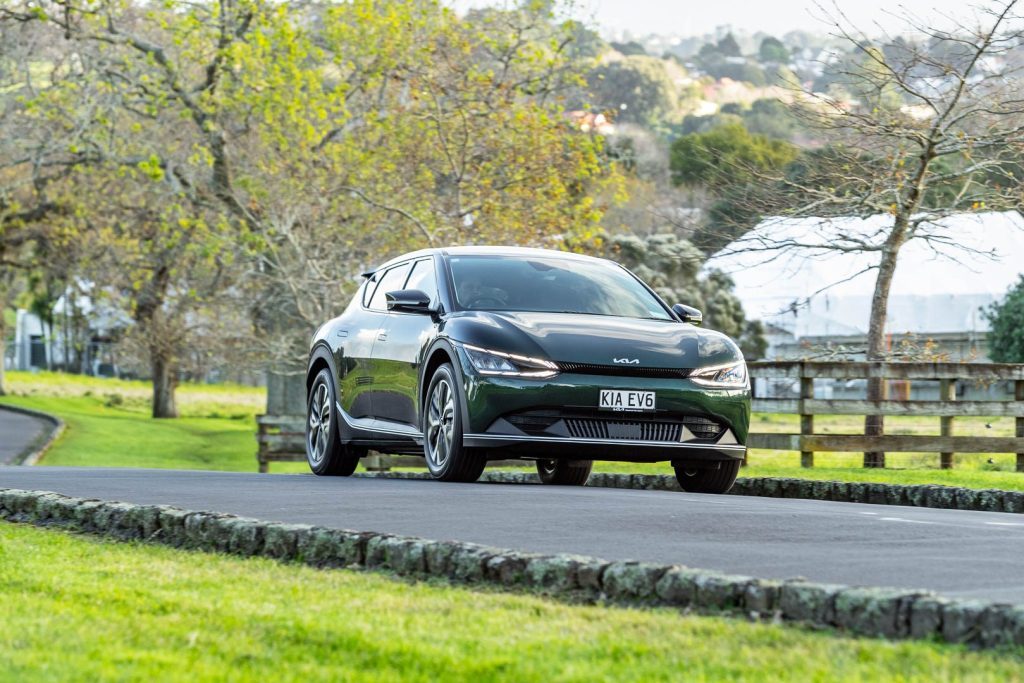
They are all but identical for performance, hitting 100km/h in seven sec flat, and each taking 4.5sec for the 80-120km/h run. We’re not sure where the Ford’s on-paper performance advantage went, as it’s lighter at 1969kg, the Kia a rather beefy 2149kg. While Ford claims a 0-100km/h time of 6.1sec, that’s using the one-foot roll-out methodology.
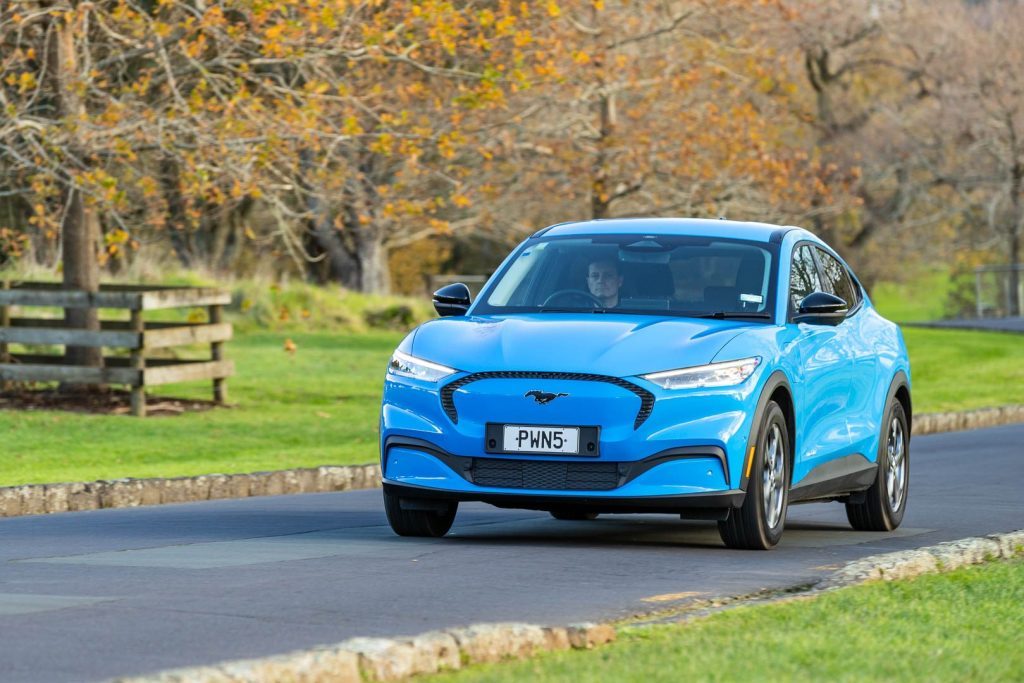
Those who like flicking between drive modes will enjoy the Kia, the button on the steering wheel, while it’s a tap tap on the screen in the Mach-E. The modes have more of an influence on the ‘stang as you move from Whisper to Active to Untamed (or Untame as it was called in this example) as it affects the level of regen and also adds propulsion sounds (something Kia wisely omitted from this EV6 model)
The Mach-E’s brakes are too snatchy at town speeds (it’s not such an issue at highway speeds) so you’ll either opt for the one-pedal mode, or you push the L button in the middle of the gear selector which adds regen when you want to slow more smoothly.
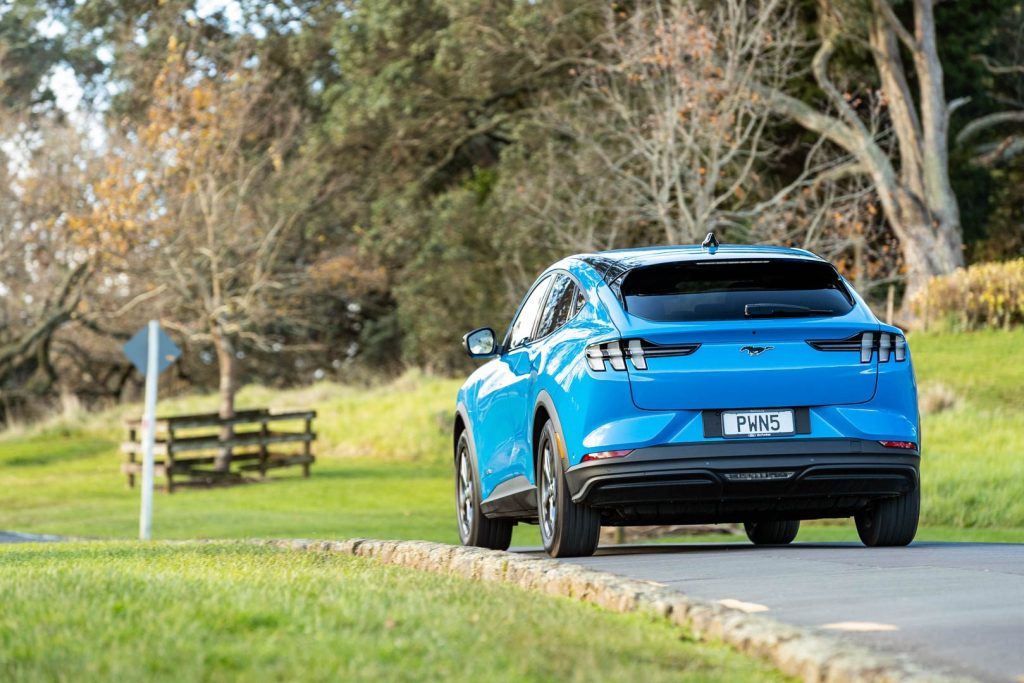
The Kia meanwhile has perfectly fine brakes, and paddles behind the wheel to easily change up the regen. This ranges from nothing to reasonably strong, along with Auto and a one-pedal mode. And while the Mustang’s one-pedal set-up slows you quickly, the Kia’s is smoother, coming to a halt without a jolt.
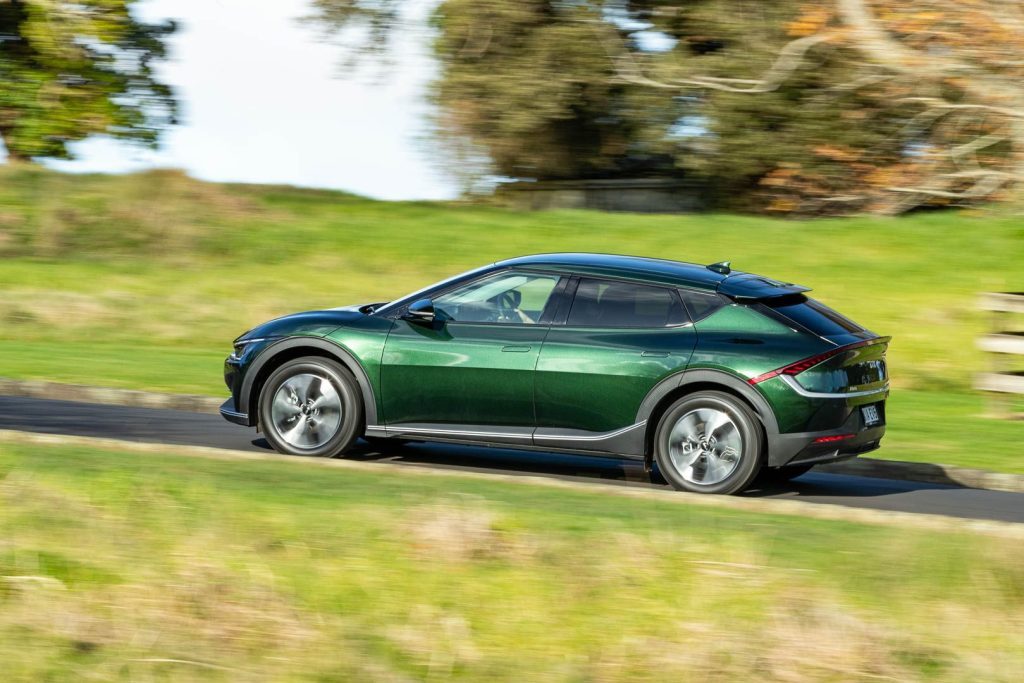
Both have a decent ride about them, though they lean a little more towards a firmer, more controlling set-up with the odd bump felt along the way, particularly on the axle laboured with the motor. We preferred the steering in the EV6, with a more natural assistance, the Mustang’s with a slight centring action, while the Kia is easier to spin around.
The Mach-E’s larger turning circle makes parking a two-cut affair.
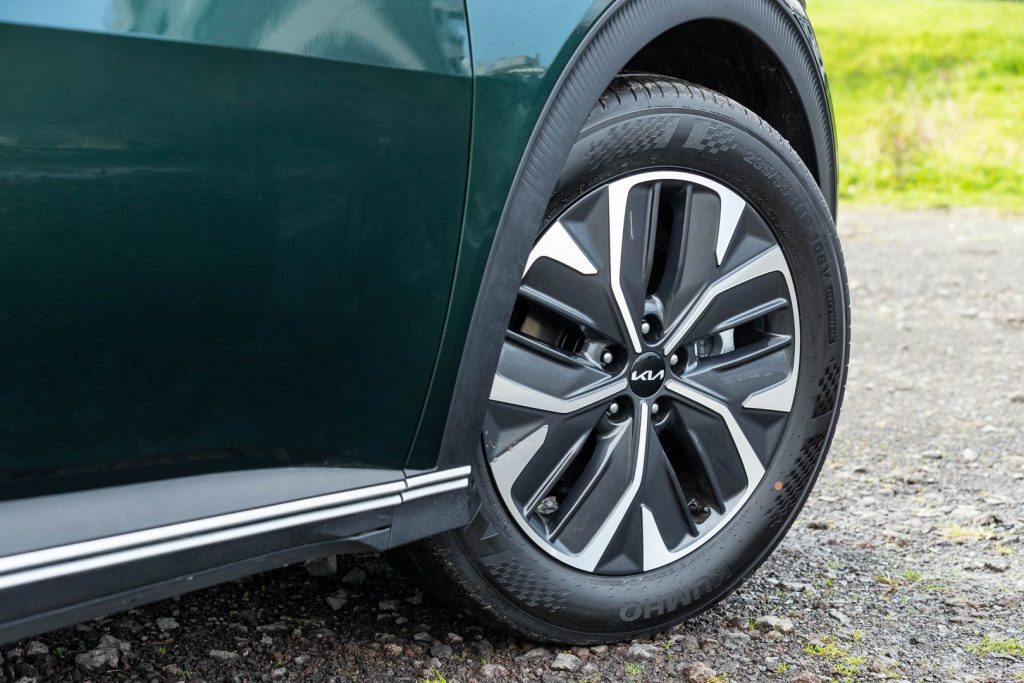
Through the curves, the Air is a model of composure. Its suspenders manage its weight commendably, both in terms of squat and dive while also taming the roll well. It’s hard to upset either end thanks to imperceptible intervention of brake nipping and the traction control keeping it smooth and tidy.
The Mach-E is a little more lively if not quite as polished. It moves about more, so the steering isn’t quite as accurate but you can give it a squirt off the curve and the rear will give a little wiggle. Thankfully the snatchy brakes aren’t an issue at higher speeds, and only needed occasionally in Untame(d) mode where the regen is stronger.
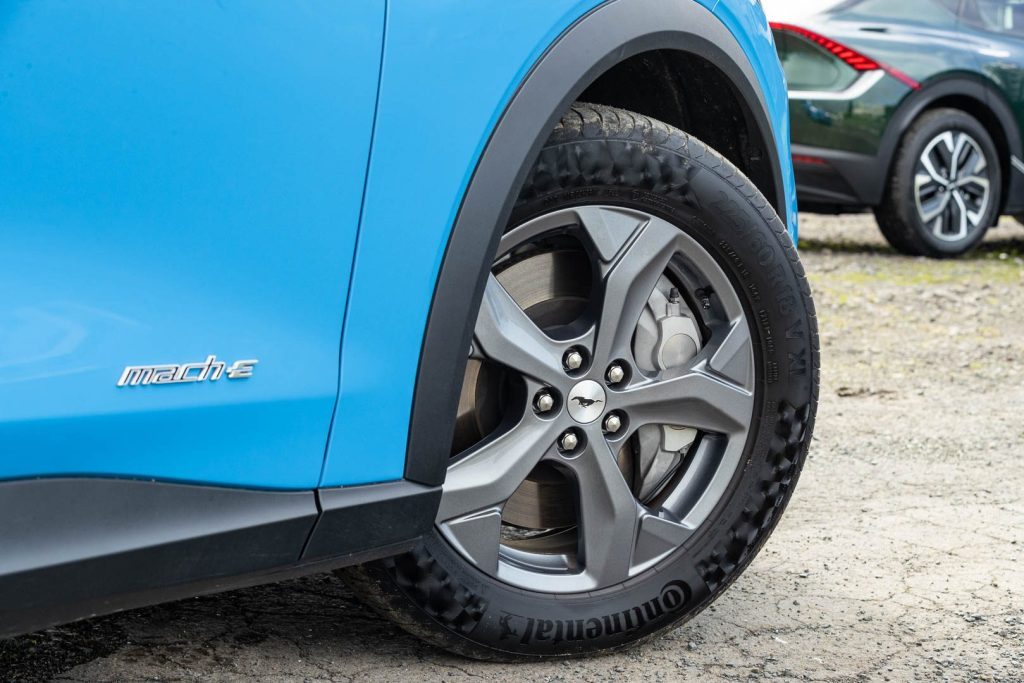
Before we get to that, the other to consider is the Tesla Model Y. This comfortably outsells these two thanks to brand power and a price now starting at $69,587 on road, giving it a handy $10k advantage.
You’ll buy it because you worship the chief twit and don’t mind following the crowds. But also it is efficient, spacious and a decent drive.
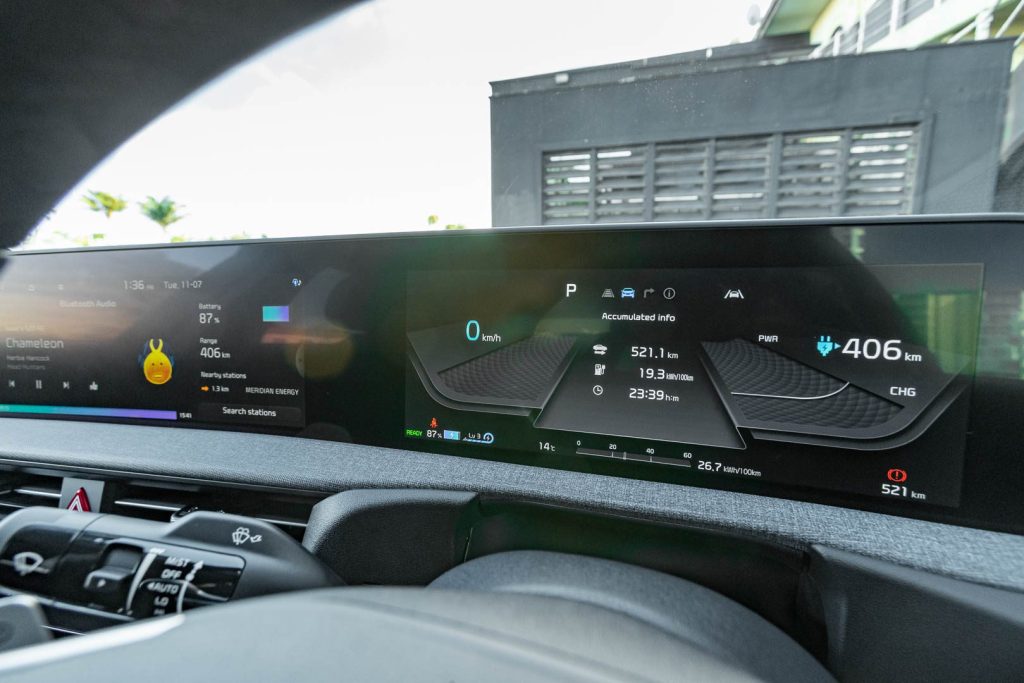
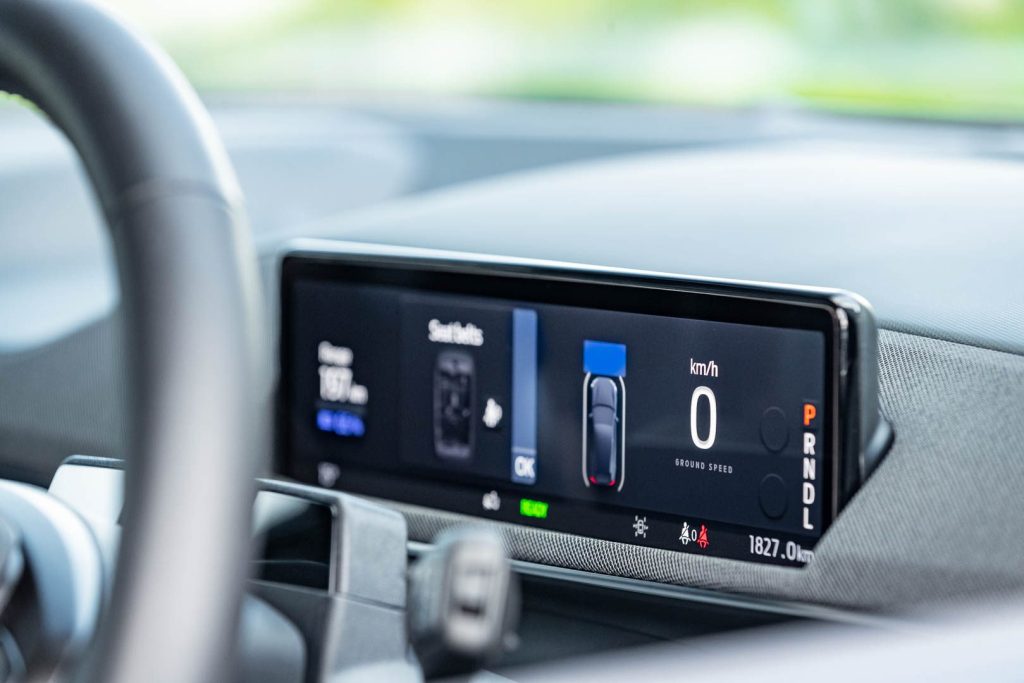
While quality is improving, a lack of service centres, particularly for those in the South Island, is worth noting as Teslas are far from faultless. And the sometimes complex control methods could turn you off too.
But we think if you’re considering these two, you have already decided the Tesla is not for you. And our money would go on the Kia for its added refinement, better range/efficiency and faster recharge times when going long distance.
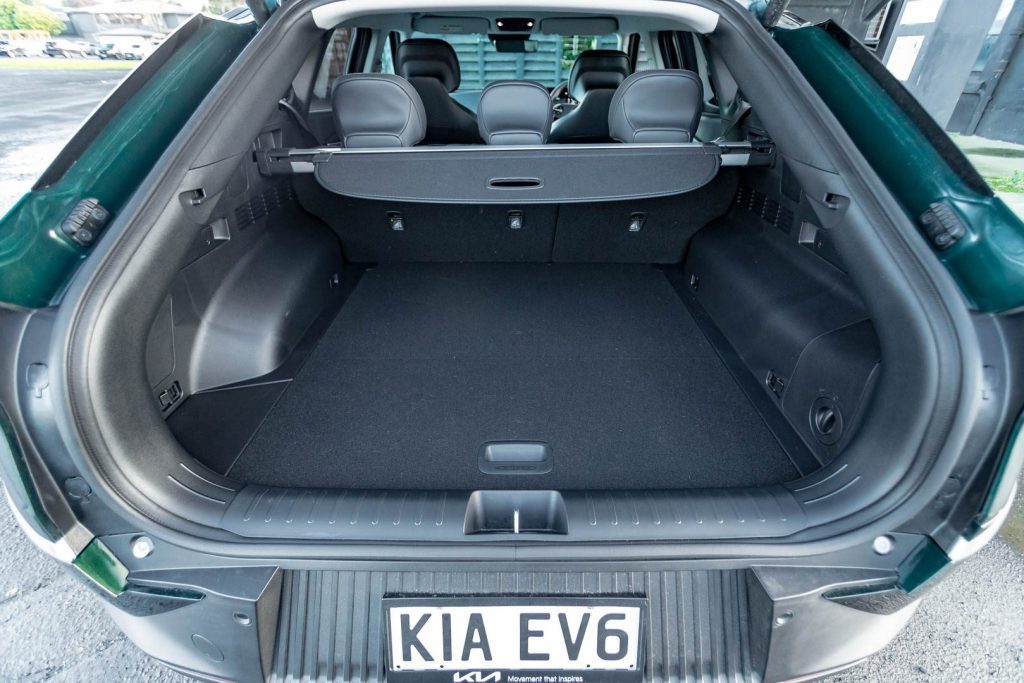
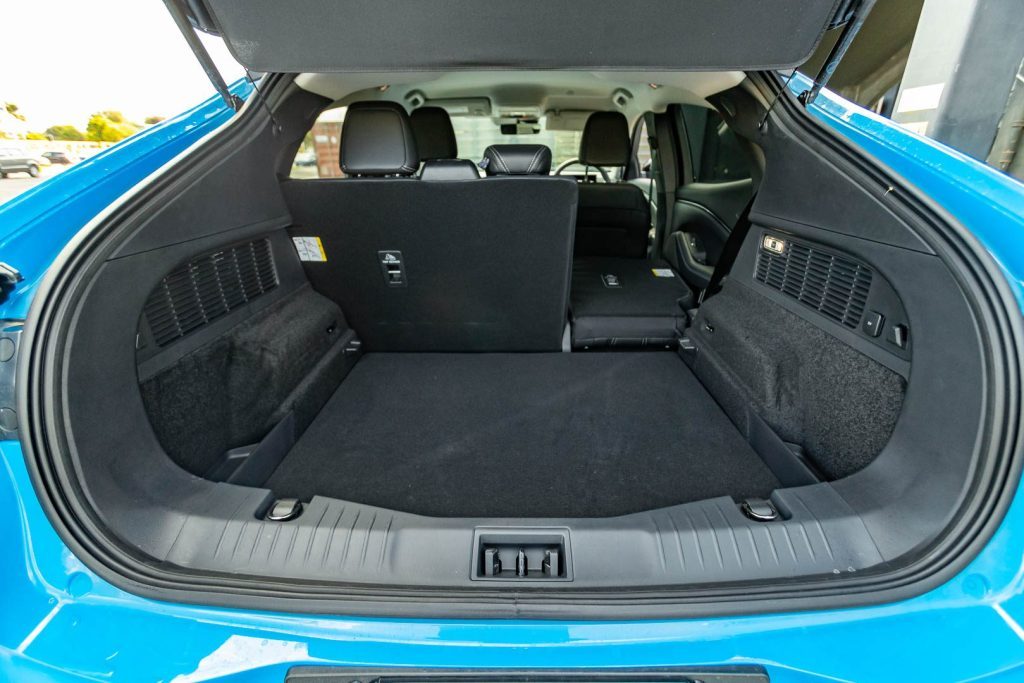
It’s generally a more polished package in most respects while fulfilling the needs of those who are after a big car.
| Model | Kia EV6 Air RWD Long Range |
| Price | $79,990 |
| Clean Car Discount | Rebate – $7,019 |
| Motor | 168kW/350Nm |
| Battery | 77.4kWh |
| Range | 528km |
| Drivetrain | single-speed auto, RWD |
| Energy Use | 16.5kWh/100km |
| C02 Output | 0g/km |
| 0-100km/h | 7.02 sec |
| 80-120km/h | 4.53 sec (123m) |
| 100-0km/h | 36.8m |
| Stability systems | ABS, ESP, TV |
| Safety | AEB, ACC, BSM, LDW, RCTA, ALK, AHB |
| Luggage capacity | f-20L, r-490-1300L |
| Tow rating | 750kg (1600kg braked) |
| Service intervals | 12 months, 15,000km |
| Warranty | 3yrs, 100,000km |
| ANCAP rating | 5 Stars (2022) |
| Weight | 2149kg |
| Model | Ford Mustang Mach-E RWD |
| Price | $79,990 |
| Clean Car Discount | Rebate – $7015 |
| Motor | 198kW/430Nm |
| Battery | 75.7kWh |
| Range | 440km |
| Drivetrain | single-speed auto, RWD |
| Energy Use | 17.2kWh/100km |
| C02 Output | 0g/km |
| 0-100km/h | 7.04sec |
| 80-120km/h | 4.52sec (123m) |
| 100-0km/h | 35.2m |
| Stability systems | ABS, ESP, TV |
| Safety | AEB, ACC, BSM, LDW, RCTA, ALK, AHB |
| Luggage capacity | f-100L, r-519-1420L |
| Ambient Cabin Noise | 70.1dB@100km/h |
| Service intervals | 12 months, 15,000km |
| Warranty | 5yrs, unlimited km |
| ANCAP rating | 5 Stars |
| Weight | 1969kg |


